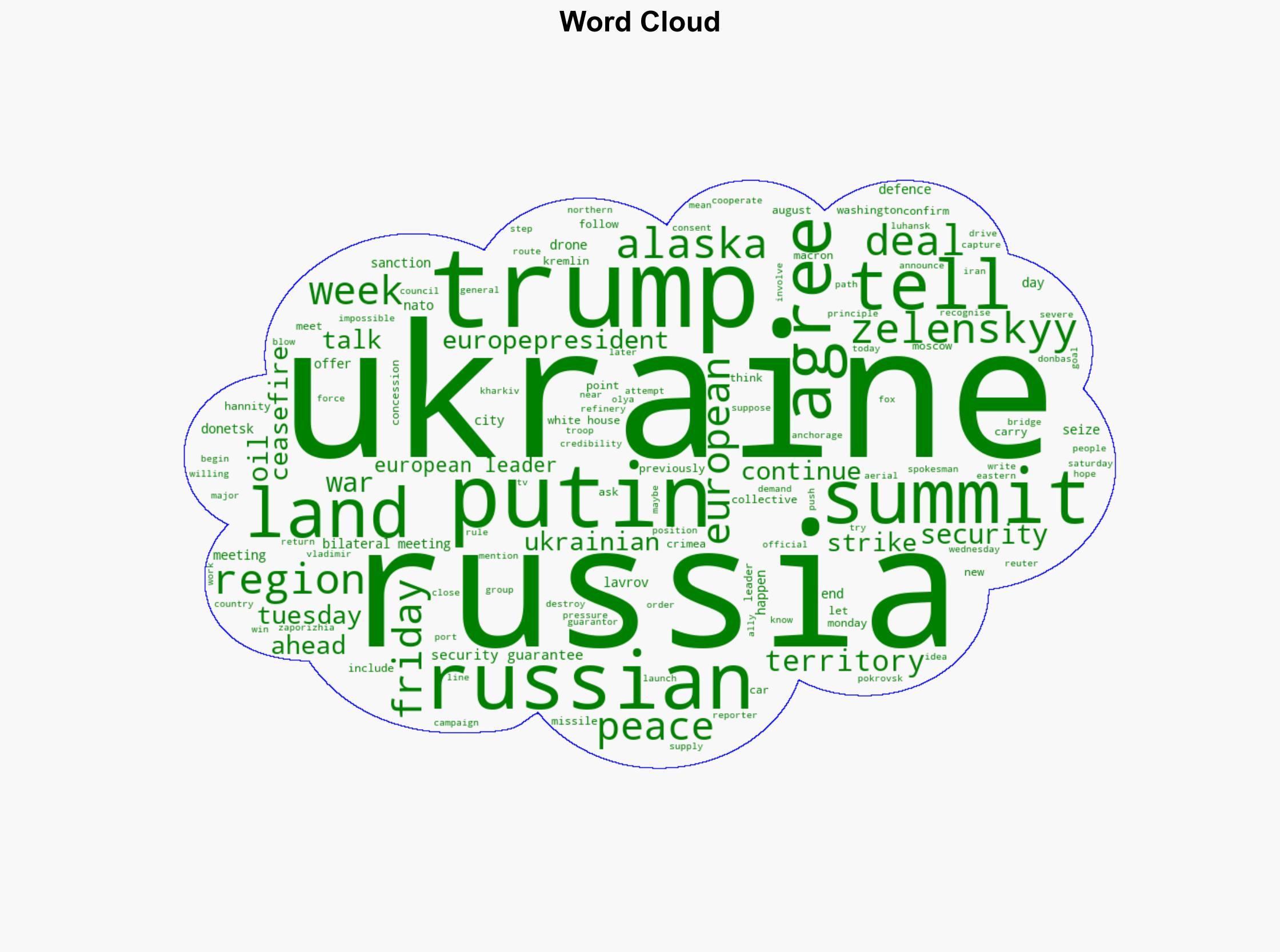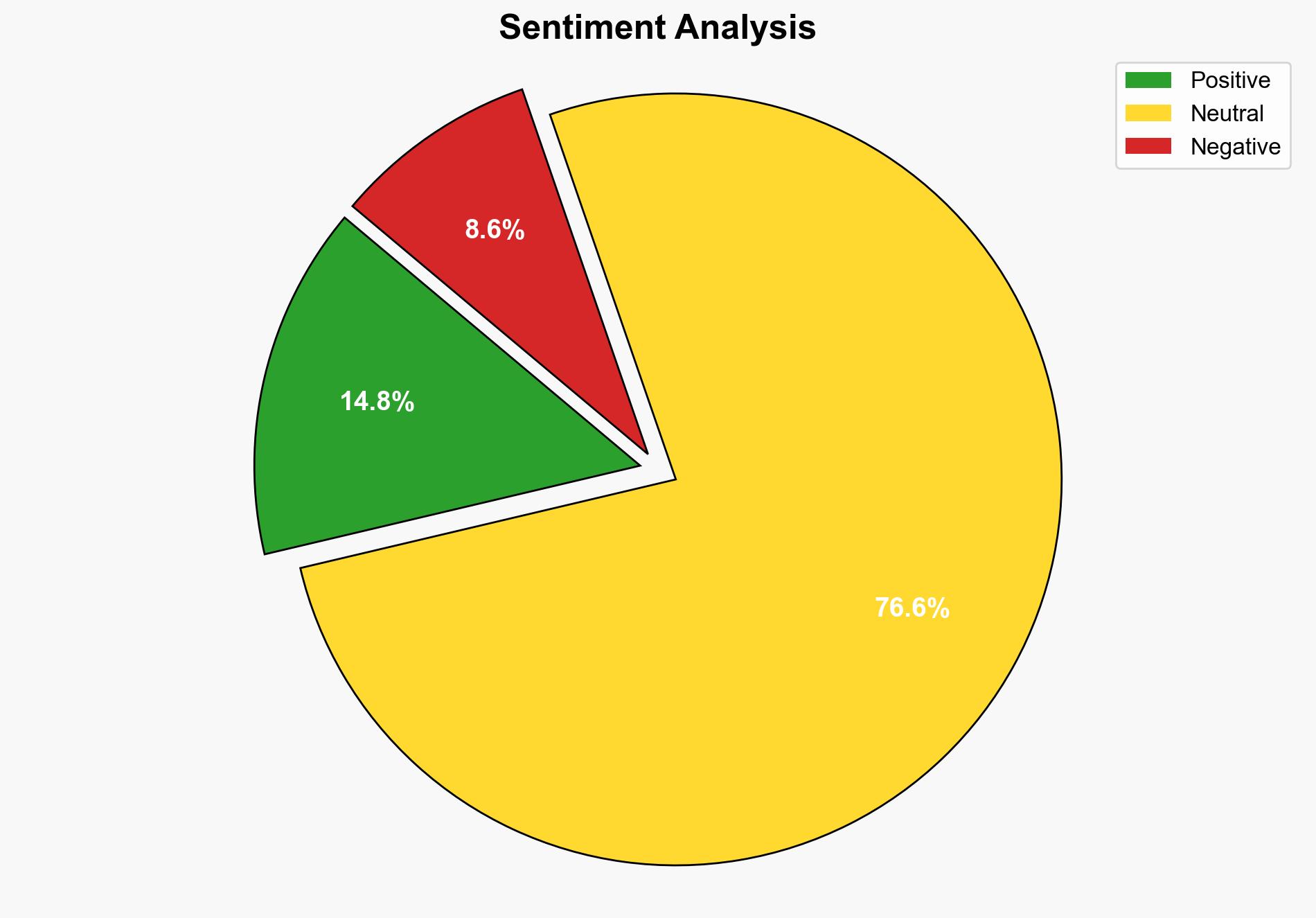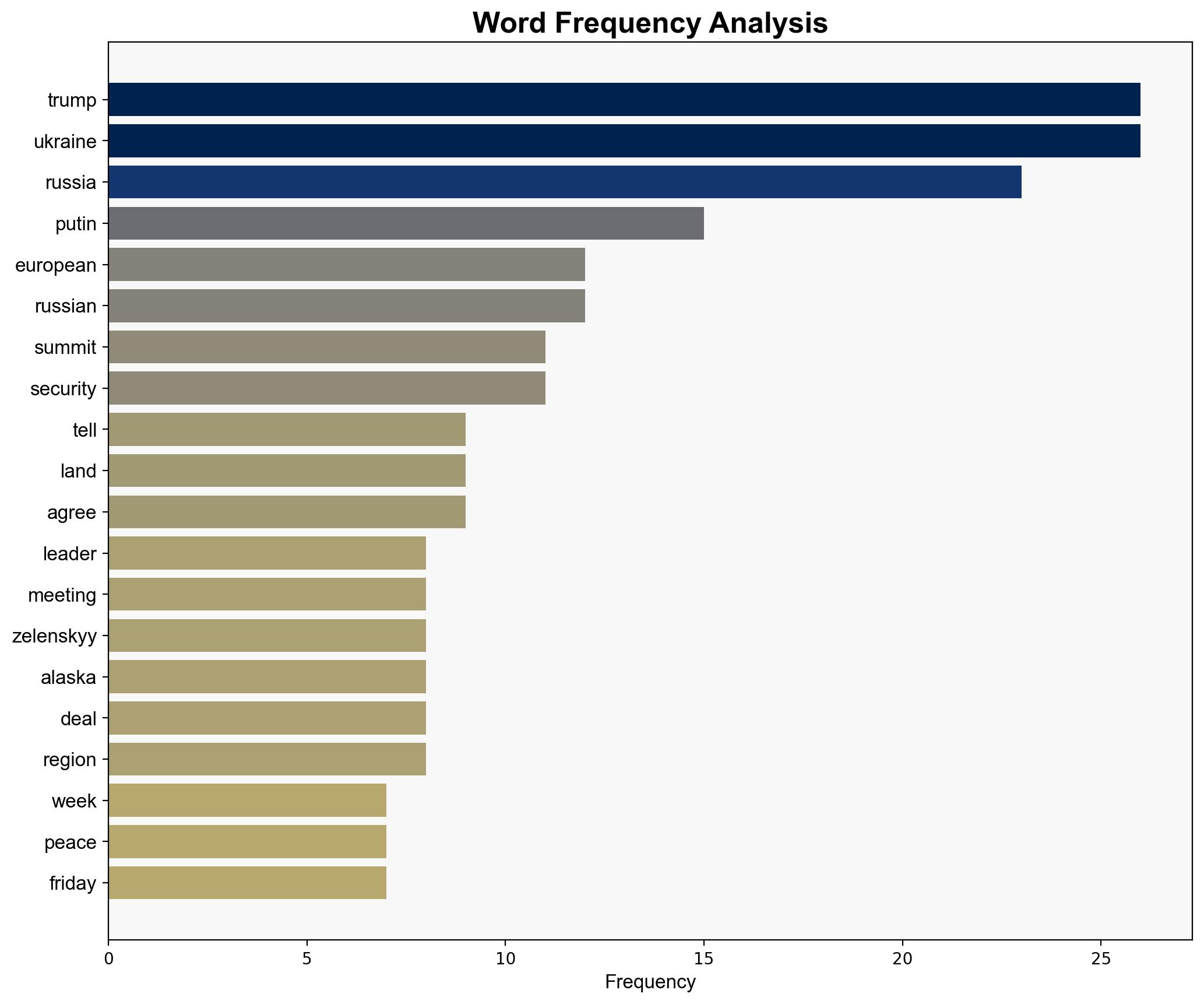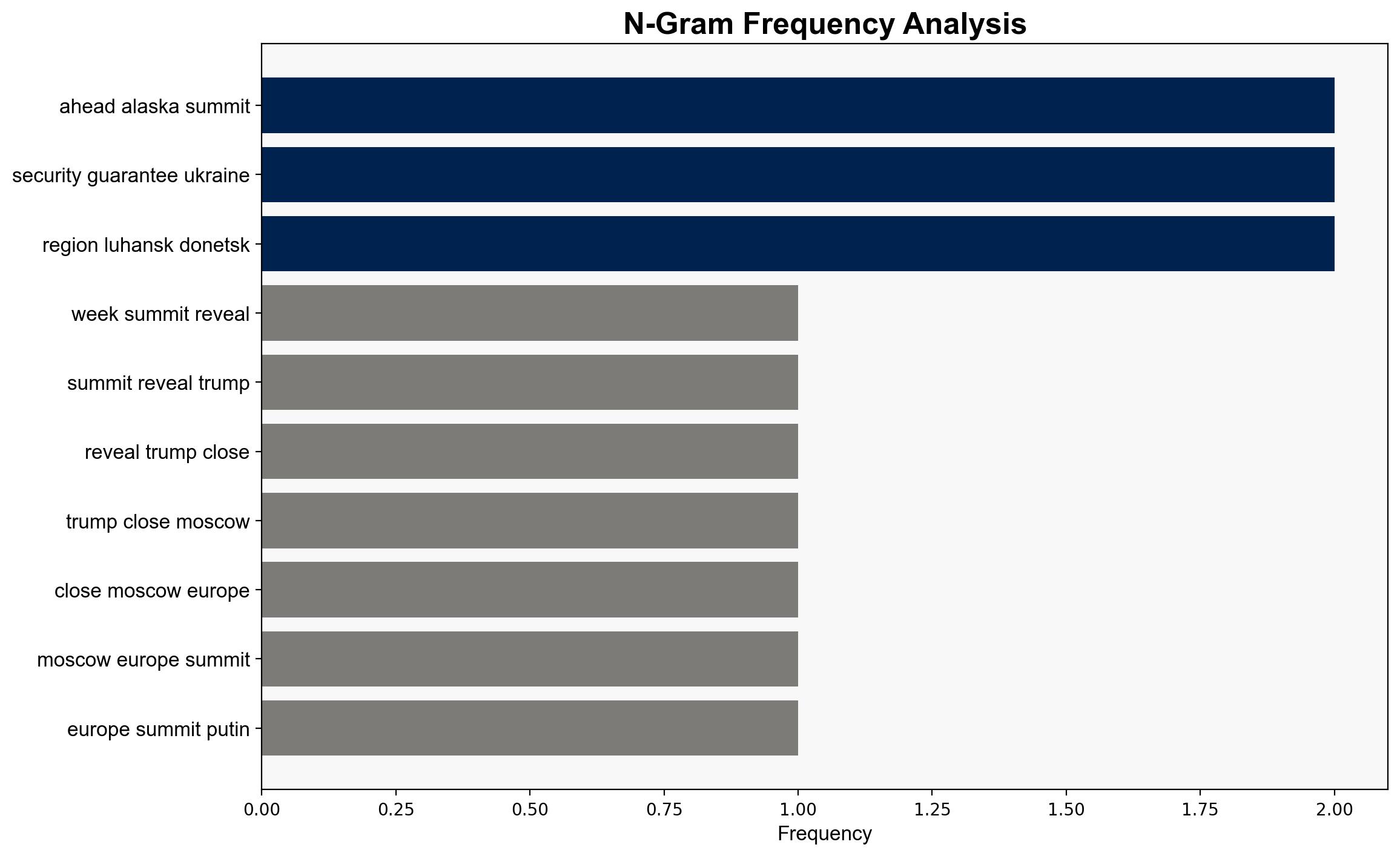A week of summits reveals Trump is closer to Moscow than Europe – Al Jazeera English
Published on: 2025-08-21
Intelligence Report: A week of summits reveals Trump is closer to Moscow than Europe – Al Jazeera English
1. BLUF (Bottom Line Up Front)
The analysis suggests a strategic realignment where Trump appears to be prioritizing relations with Moscow over traditional European alliances. The most supported hypothesis is that Trump’s actions are part of a broader strategy to recalibrate U.S. foreign policy towards Russia, potentially at the expense of European relations. Confidence level: Moderate. Recommended action: Monitor diplomatic engagements closely and prepare for shifts in alliance structures.
2. Competing Hypotheses
Hypothesis 1: Trump’s closer alignment with Moscow is a deliberate strategy to leverage Russia against China and recalibrate global power dynamics.
Hypothesis 2: Trump’s actions are primarily driven by personal or political motivations, rather than a coherent strategic realignment, leading to unintended distancing from European allies.
Using ACH 2.0, Hypothesis 1 is better supported due to the structured nature of diplomatic engagements and the potential strategic benefits of leveraging Russia against China.
3. Key Assumptions and Red Flags
Assumptions include the belief that Russia is a willing partner in recalibrating global power dynamics and that European alliances are resilient enough to withstand temporary neglect. Red flags include potential underestimation of European backlash and overreliance on Russia’s cooperation. Inconsistent data regarding the true extent of Trump’s strategic intentions and the internal dynamics influencing his decisions.
4. Implications and Strategic Risks
Potential implications include a shift in global alliances, with Europe seeking alternative partnerships. Risks involve economic sanctions backfiring, cyber threats from alienated allies, and geopolitical instability in Eastern Europe. Escalation scenarios could involve increased military posturing by Russia in Ukraine, testing U.S. commitments to NATO.
5. Recommendations and Outlook
- Enhance intelligence gathering on U.S.-Russia diplomatic engagements to anticipate policy shifts.
- Strengthen diplomatic ties with European allies to mitigate potential fallout.
- Scenario projections:
- Best Case: Successful recalibration leads to a balanced global power structure.
- Worst Case: European alliances fracture, leading to regional instability.
- Most Likely: Temporary strain on U.S.-Europe relations with gradual normalization.
6. Key Individuals and Entities
Donald Trump, Vladimir Putin, Volodymyr Zelenskyy, Andriy Kovalev, Viktor Trehubov.
7. Thematic Tags
national security threats, geopolitical strategy, U.S.-Russia relations, European alliances





